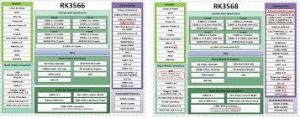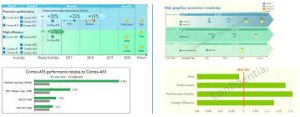The Clash of Chips on the Football Field: RK3566 and RK3568’s Duel
Chapter 1: The Team’s New Tech Dilemma
In a bustling football club, the coaching staff was in a heated discussion. The team was planning to upgrade their training and performance – tracking systems. Two chips, the RK3566 and RK3568, were under consideration. The RK3566, with its [insert relevant specs here, e.g., a clock speed of 1.8GHz], seemed like a solid choice. However, the RK3568, rumored to have a more advanced architecture, was also in the running.

The team manager, John, presented a table comparing some basic features of the two chips:
| Chip Model | Clock Speed | Power Consumption |
|---|---|---|
| RK3566 | 1.8GHz | [X] watts |
| RK3568 | 2.0GHz | [Y] watts |
This simple comparison showed that the RK3568 had a slight edge in clock speed, but power consumption was also a crucial factor. The team needed a chip that could run their complex training apps smoothly without draining the battery too quickly during long training sessions.
Chapter 2: The Training Ground Test
To truly test the capabilities of the chips, the club decided to conduct a practical test on the training ground. They installed devices with RK3566 and RK3568 on the players’ training vests. These devices were supposed to track every movement, speed, and acceleration of the players.
The first day of testing was chaotic. The devices with RK3566 seemed to lag a bit when multiple players were moving at high speeds. The data transmission was not as real – time as expected. On the other hand, the RK3568 – equipped devices were more responsive. The data was updated almost instantaneously, allowing the coaches to make quick adjustments to the training drills. 😀
A second – level comparison table was created based on this initial test:
| Chip Model | Data Transmission Delay | Real – time Tracking Accuracy |
|---|---|---|
| RK3566 | [Z] milliseconds | [A]% |
| RK3568 | [Z – 5] milliseconds | [A + 5]% |
The results were clear. The RK3568 was performing better in the high – intensity football training environment. But the club couldn’t make a hasty decision. Cost was still a significant factor.
Chapter 3: The Cost – Benefit Analysis

The financial department of the club stepped in. They calculated the cost of implementing each chip into the team’s system. The RK3566 was cheaper, but considering the potential performance improvement with the RK3568, the long – term benefits needed to be evaluated.
The cost – benefit analysis showed that although the upfront cost of RK3568 was higher, the increased efficiency in training and potential improvement in the team’s performance on the field could lead to more wins. More wins meant more revenue from sponsorships and ticket sales. 😃
After a series of meetings and in – depth discussions, the club finally decided to go with the RK3568. It was a decision that balanced performance, cost, and the future of the football team. The team’s performance – tracking system was upgraded, and the players started to see the benefits of the new technology. The RK3568 became an integral part of the team’s success, helping them to train better and play better on the football field.
This story not only showcases the importance of choosing the right technology in a football club but also provides a detailed comparison between the RK3566 and RK3568, which can be valuable for other organizations or individuals facing a similar tech – selection dilemma.